Today’s modern motorhomes are designed for year-round operation. Most manufacturers offer a so-called winter package for their models. This is an additional package that ensures comfortable and safe motorhoming even in temperatures well below freezing.
We use our motorhome all year round. With Knaus we were in the Alps for 2 months continuously one year. We drove around the ski resorts and looked for the places where it snowed the most. We easily survived the whole two months without any camping. This is also due to the fact that we prepared our motorhome for motorhoming without camping. We had a solar panel and a fuel bomb.
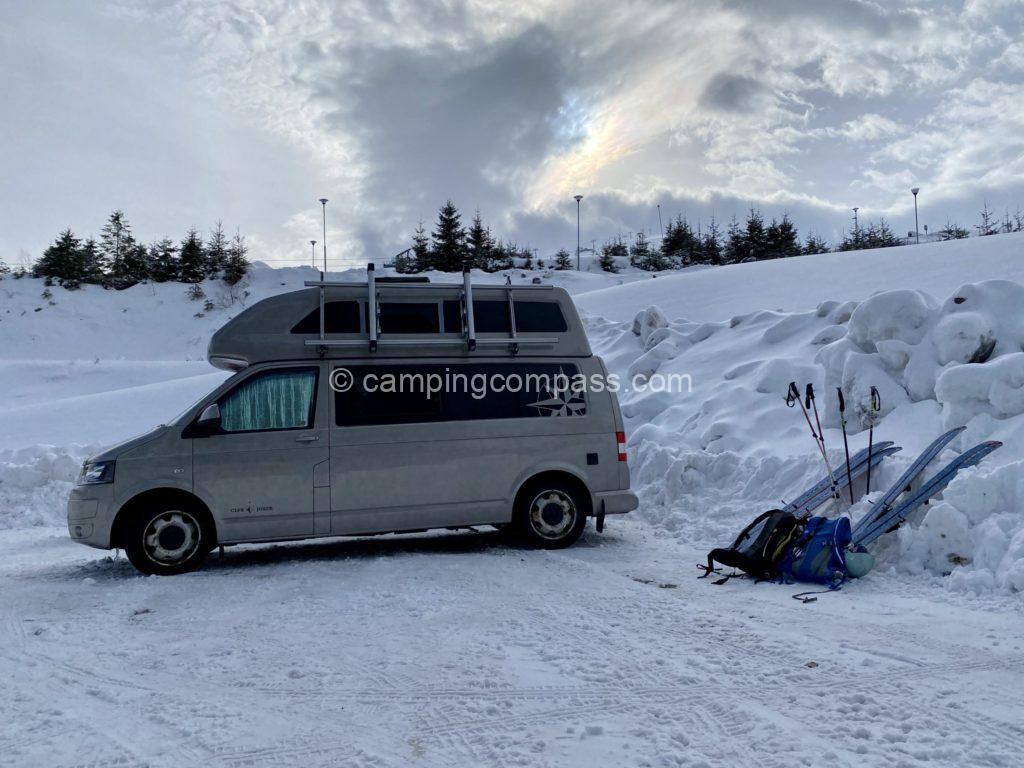
Using the motorhome in winter
“In the Alps, motorhome parkings with a service point are quite common”
Mostly they are free as a service of the municipality for the motorhomers to attract them to that particular resort or village of theirs.
The water dispensers are heated so their water doesn’t freeze. Everything is nicely cleared of snow. Many times there is the possibility of connecting to electricity.
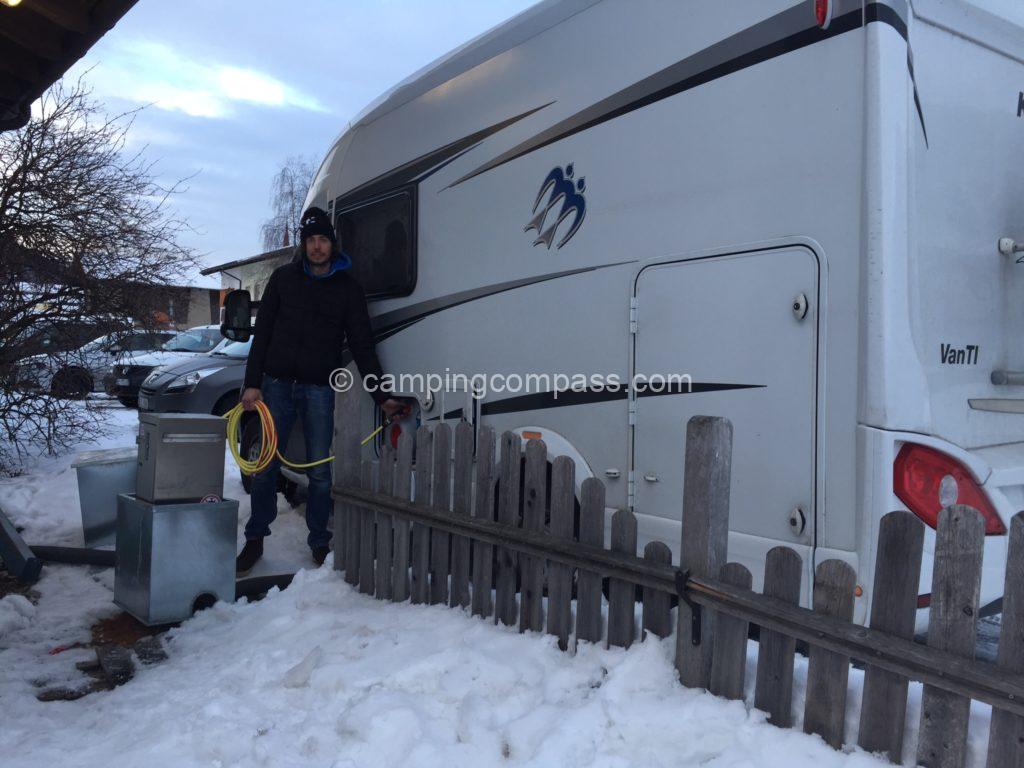
In addition to the free parking lots, there are also paid parking lots or campsites that operate all year round. It’s a common thing and 99% of the time you won’t even need chains.
As in the summer, it is possible to do laundry at the laundromat or buy groceries. The only difference is that you don’t get much time outside the motorhome and it’s dark by 4pm and you have to shine a light. So you have to watch the electricity you use and check the gas level in the tanks every day.
It’s quite important to know where your gas tanks are located in the motorhome and what gas you are filling up with
“In winter it’s best to use pure propane”
Propane can gasify down to -32 degrees. Budane only down to 0 degrees. With a propane-butane or LPG mixture, you may not be able to get all the gas out of the gas cylinder, or your supply may freeze. To prevent the gas supply from freezing, there is something called Truma EisEx, which is an electric heating of the gas supply.
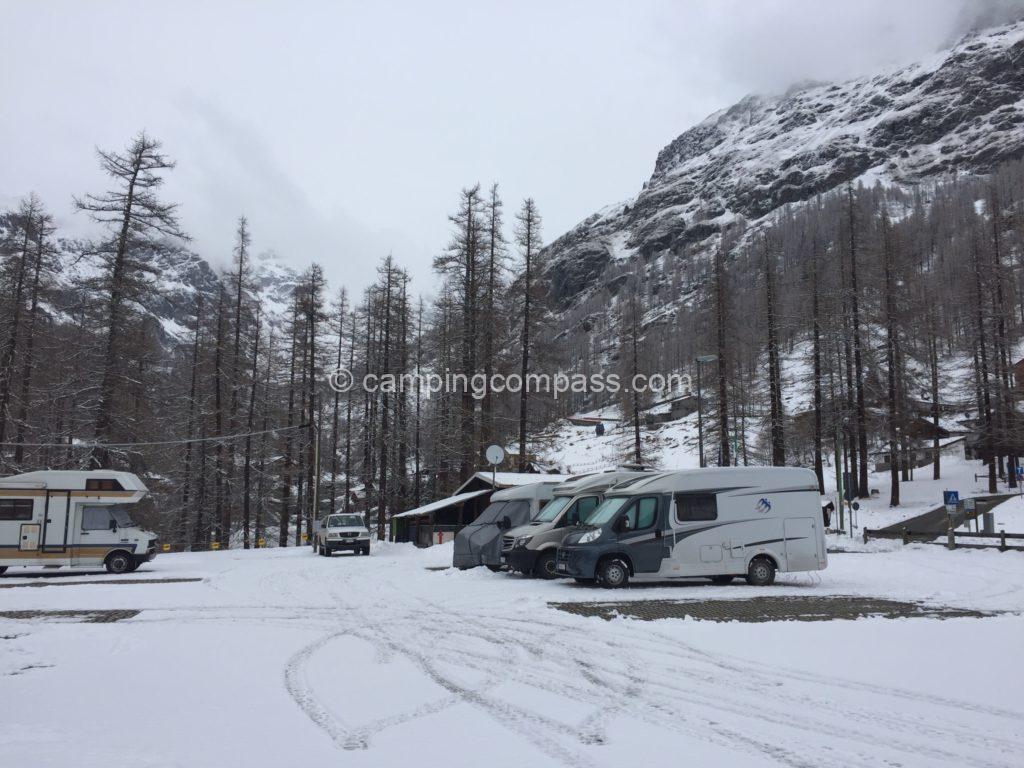
We had gas cylinders in Knaus located in a heated garage. So we never had any problem with gas freezing, and we camped in temperatures around -25 degrees. We almost always filled up with LPG, only sometimes pure propane. In my opinion, the location of the gas cylinders is more important than the actual contents of the cylinders.
Any motorhome with a winter pack should have boiler and water system freeze protection. It’s called Frost Control. This valve will automatically drain the water from the boiler if there is a risk of freezing. It reacts, I think, to temperatures below 7 degrees. It’s a great thing, you never know when your heating will shut off due to lack of gas, electricity or some other unknown fault. A new combi heater costs 2-4 thousand euros, add to that the price of installation and you’ll immediately realise that Frost Control is a great thing.

Unplugging the motorhome in winter
After a winter outing, you need to remove all the water from the motorhome. If you go skiing every week, this will become a regular thing for you.
Before actually turning off the heater is necessary:
- empty the contents of the toilet cassette
- drain the water from the boiler and the whole system thoroughly
I write drain thoroughly on purpose. Many times what happens is that the drain valve to drain the water from the boiler is either clogged or some rubber tubing is plugged after a whole summer.
“It has happened to us routinely that the water from the boiler didn’t drain the first time”
The problem was still with the vent hose of the Truma Combi boiler. I still had to blow it out after the flight. I was never sure it hadn’t clogged up again, so I kept an honest eye on the water drain. There is about 10 litres of water in the boiler and it has been leaking for some time
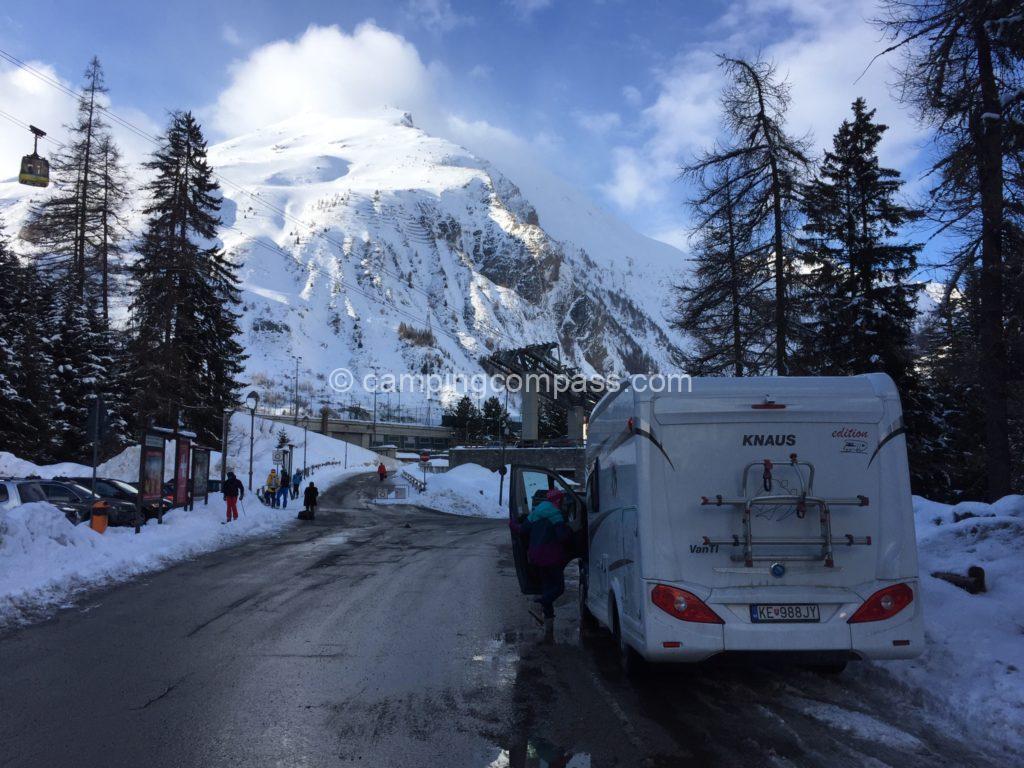
Every manufacturer and model of motorhome has a certain procedure for draining the water system. In general, however, the following applies:
- turn off the pump at the motorhome control panel
- open all taps to a position between hot and cold water. All of them, including the shower tap, in the bathroom, in the kitchen but also in the external shower.
- open the main waste water outlet valve
- open the main fresh water outlet valve
- open the Frost Control or other valves located at the lowest point of the water system
These instructions are just to understand the principle of draining water, be sure to check your motorhome’s instruction manual. I wouldn’t want you to be angry with me over a ruined boiler.
Even with all the valves thoroughly opened, some water will still remain in the motorhome hoses. However, these are flexible and won’t get damaged. We tend to drain all the water before we get home, after draining the water we still drive the motorhome a few dozen miles to really get all the water out through the valves.
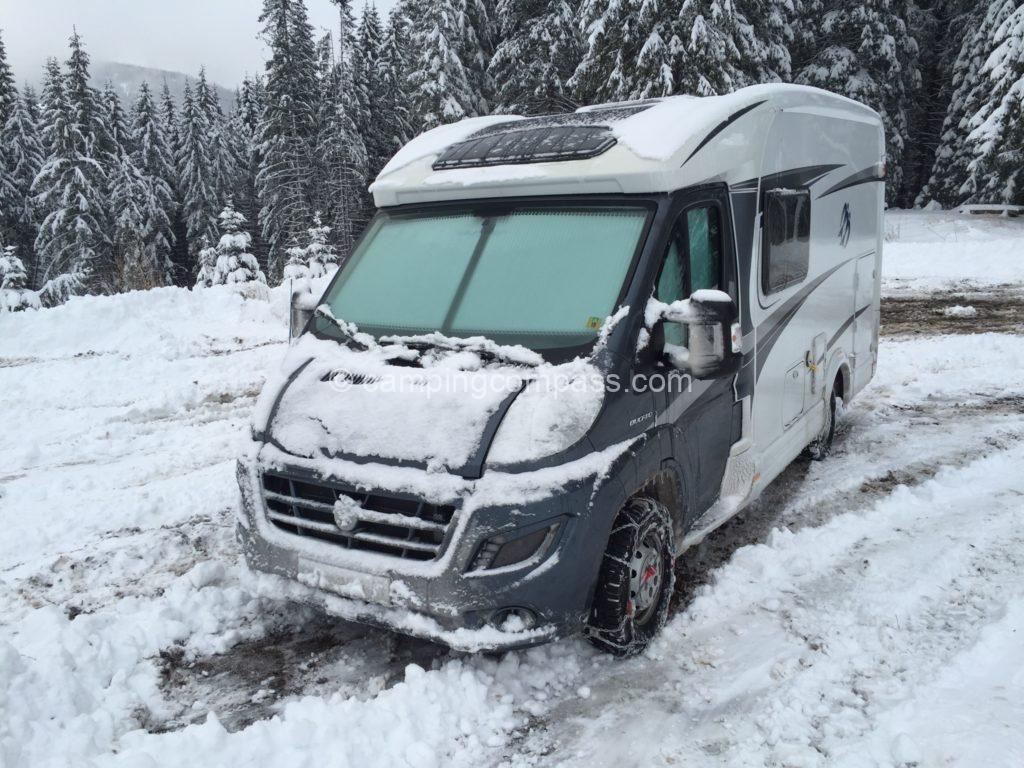
Putting water in the motorhome
The water for the motorhome is fed into the drinking water tank. Ideally, the motorhome should be heated before filling to thaw out any water that might be blocking passage in the water pipes.
“We once had a drop of water left in the water pump that froze in the cold”
The pump was therefore unable to move. However, all it had to do was wait a bit for the pumped water to melt the ice and the pump started.
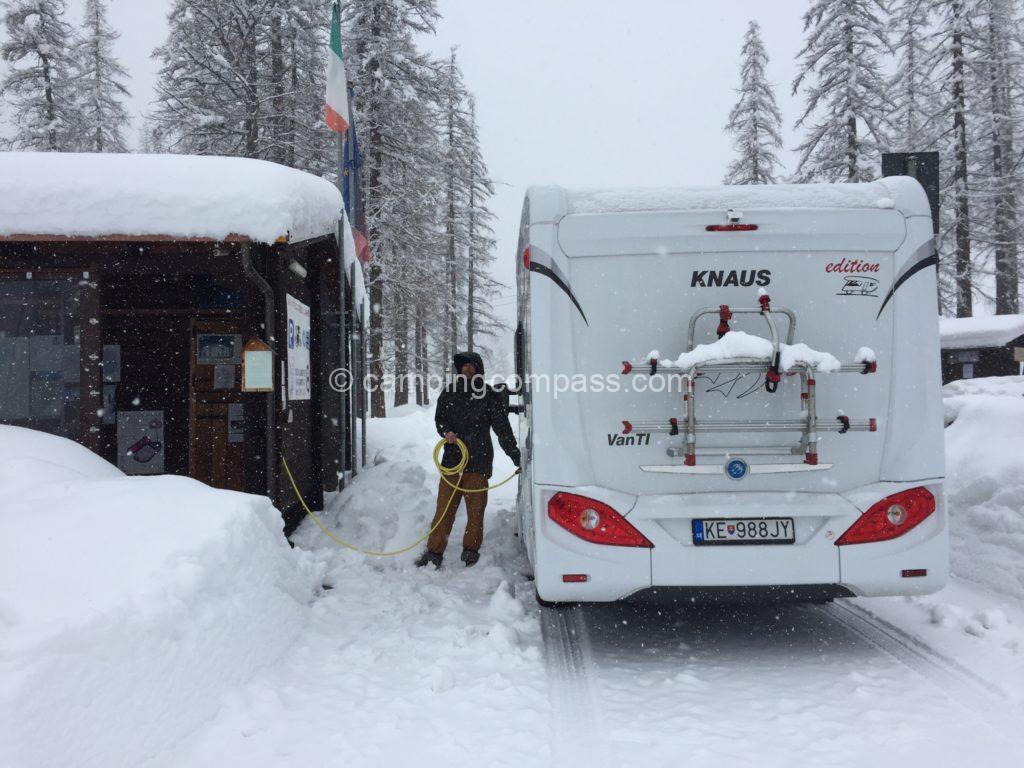
When the water is pumped into the system, it is also necessary to pump water into the boiler. This is done simply by opening the tap to the hot water position. The pump fills the boiler with cold water. The boiler holds approximately 10 litres, depending on the type and manufacturer of the boiler.
If there is water in the hot water pipe, it is similarly introduced into the cold water pipe. Simply open the tap to the cold water position.
Regardless of the season, we have prepared for you a must-have motorhome accessories. Go have a look at the article.

